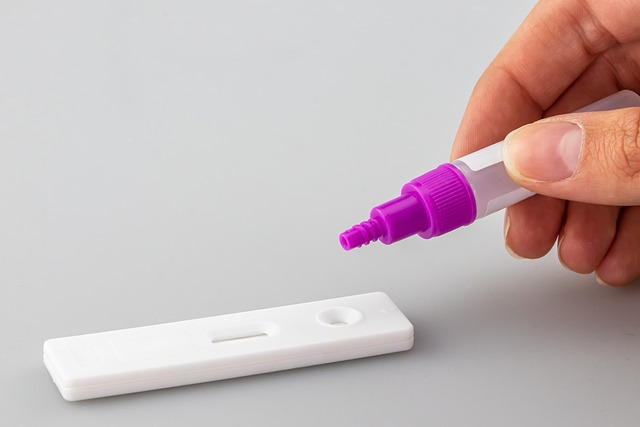Role of Donor Centers and Transportation in Global Therapeutic Supply Chains
Donor centers and transportation networks form the backbone of plasma-based therapeutic supply chains, connecting individual donors to hospitals, manufacturers, and laboratories. This article examines how screening, collection methods, testing, and logistics combine to maintain safety, product integrity, and timely delivery in an international context.

Donor centers and transportation systems are critical links in the chain that turns individual donations into clinical therapies used worldwide. From initial screening of potential donors to the controlled transport of collected material, each step must balance donor safety, product quality, and regulatory compliance. Effective coordination between collection sites, testing labs, manufacturers, and distribution partners reduces waste, preserves functional components, and supports the availability of therapies that rely on plasma-derived inputs.
How do donor screening and eligibility protect safety?
Donor screening and eligibility protocols are the first line of defense for ensuring safe biological material enters supply chains. Prospective donors are evaluated through health questionnaires, vital signs checks, and focused risk assessments to identify any factors that could affect the safety of collected components. Screening also includes serology and other laboratory tests to detect infectious agents that would preclude use. Clear eligibility criteria, combined with consistent training for staff at donor centers, reduce the likelihood of contaminated or unusable units reaching downstream processing and help uphold public confidence in donation programs.
What is the role of apheresis and components in collection?
Apheresis is a targeted collection technique often used to obtain plasma or specific components while returning other blood elements to the donor. This method enhances yield of the desired component and can minimize overall donor visits. Donor centers equipped for apheresis must maintain specialized consumables, trained technicians, and strict procedural controls to protect donor health and product quality. Collected components—plasma, platelets, or concentrated antibodies—enter different processing pathways, and labeling systems at collection sites ensure traceability throughout manufacturing and distribution.
How are antibodies and serology evaluated for therapeutic use?
Laboratory testing for antibodies and serology is central to determining which donations are suitable for therapeutic applications. Serology assays screen for infectious agents and measure antibody levels when plasma is used for immunoglobulin products or convalescent therapies. Standardized testing protocols, validated equipment, and quality management systems at accredited laboratories provide consistent results that inform fractionation and product release decisions. Maintaining chain-of-custody documentation from the donor center to the testing facility preserves sample integrity and supports regulatory compliance.
How are transfusion safety and aftercare managed for donors?
Safety during and after donation encompasses both the immediate transfusion-related practices for recipients and the aftercare provided to donors. Donor centers follow transfusion and collection safety protocols to prevent adverse reactions, and they provide recovery guidance to donors, including rest, hydration, and signs to watch for after an apheresis session. Monitoring donor health trends supports long-term donor retention and safety. Proper aftercare and follow-up also protect the supply: healthy, well-informed donors are more likely to continue contributing usable components that meet clinical standards.
How do regulation and compensation shape donation programs?
Regulation defines permissible practices for donor eligibility, testing standards, transportation conditions, and product labeling. National and international authorities publish guidelines that donor centers and transporters must follow to ensure cross-border acceptability of therapeutic products. Compensation policies vary by jurisdiction and influence donor recruitment and retention strategies; they must be structured to avoid coercion while acknowledging public health and ethical considerations. Transparent regulatory compliance and clear policies on any allowable compensation help maintain ethical practices and consistent supply availability.
What logistics and transportation challenges affect therapeutic supply chains?
Logistics is the link between collection and clinical or manufacturing endpoints. Proper cold chain management, secure packaging, and timely transport reduce degradation of sensitive components and antibodies. Donor centers coordinate with couriers experienced in biological shipments to meet temperature, documentation, and customs requirements for national and international transfers. Contingency planning for delays, demand surges, or supply interruptions helps protect inventory integrity. Efficient route planning, batch consolidation, and real-time tracking systems are increasingly used to optimize turnaround and reduce loss during distribution.
This article is for informational purposes only and should not be considered medical advice. Please consult a qualified healthcare professional for personalized guidance and treatment.
Donor centers and transportation networks together form a tightly interdependent system that supports therapeutic manufacturing and clinical use worldwide. Strengthening screening, collection methods like apheresis, testing, and logistics enhances product safety and availability. Continuous attention to regulation, donor welfare, lab standards, and transport controls helps sustain resilient supply chains capable of meeting clinical needs while protecting donors and recipients alike.






